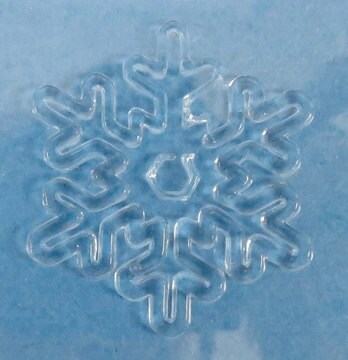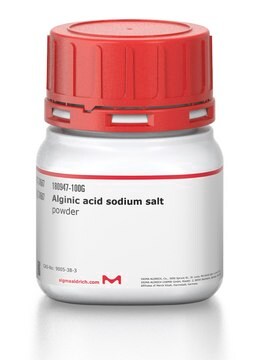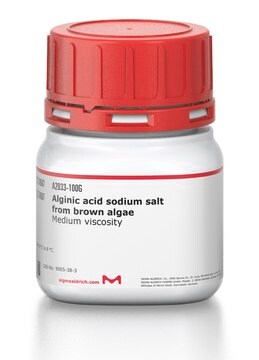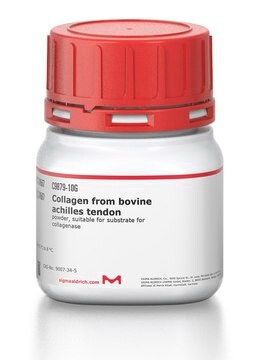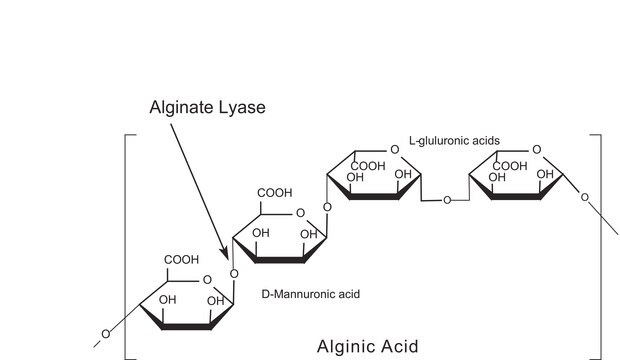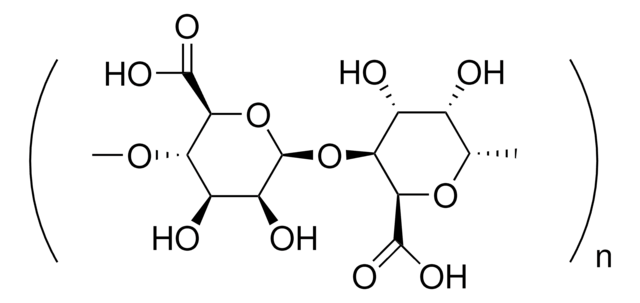Kluczowe dokumenty
906913
TissueFab® bioink
Alg(Gel)ma -Vis/525 nm
Synonim(y):
Alginian, Alginian sodu, Bioink, Biokomponent żelMA-alginian, Metakrylamid żelatyny, Metakrylan żelatyny, Metakryloil żelatyny
About This Item
Polecane produkty
opis
suitable for 3D bioprinting applications
Formularz
gel form (Viscous)
zanieczyszczenia
≤5 CFU/g Bioburden (Fungal)
≤5 CFU/g Bioburden (Total Aerobic)
kolor
colorless to pale yellow
pH
6.5-7.5
Zastosowanie
3D bioprinting
temp. przechowywania
2-8°C
Szukasz podobnych produktów? Odwiedź Przewodnik dotyczący porównywania produktów
Powiązane kategorie
Opis ogólny
Zastosowanie
Opakowanie
Informacje prawne
Hasło ostrzegawcze
Warning
Zwroty wskazujące rodzaj zagrożenia
Zwroty wskazujące środki ostrożności
Klasyfikacja zagrożeń
Skin Sens. 1 - STOT RE 2
Organy docelowe
Liver,Upper respiratory tract
Kod klasy składowania
10 - Combustible liquids
Klasa zagrożenia wodnego (WGK)
WGK 3
Temperatura zapłonu (°F)
Not applicable
Temperatura zapłonu (°C)
Not applicable
Wybierz jedną z najnowszych wersji:
Certyfikaty analizy (CoA)
It looks like we've run into a problem, but you can still download Certificates of Analysis from our Dokumenty section.
Proszę o kontakt, jeśli potrzebna jest pomoc Obsługa Klienta
Masz już ten produkt?
Dokumenty związane z niedawno zakupionymi produktami zostały zamieszczone w Bibliotece dokumentów.
Klienci oglądali również te produkty
Produkty
Biotusze umożliwiają biodrukowanie 3D konstruktów tkankowych do badań przesiewowych leków i przeszczepów; wybór odpowiednich biotuszów do określonej inżynierii tkankowej.
Professor Shrike Zhang (Harvard Medical School, USA) discusses advances in 3D-bioprinted tissue models for in vitro drug testing, reviews bioink selections, and provides application examples of 3D bioprinting in tissue model biofabrication.
Nasz zespół naukowców ma doświadczenie we wszystkich obszarach badań, w tym w naukach przyrodniczych, materiałoznawstwie, syntezie chemicznej, chromatografii, analityce i wielu innych dziedzinach.
Skontaktuj się z zespołem ds. pomocy technicznej

